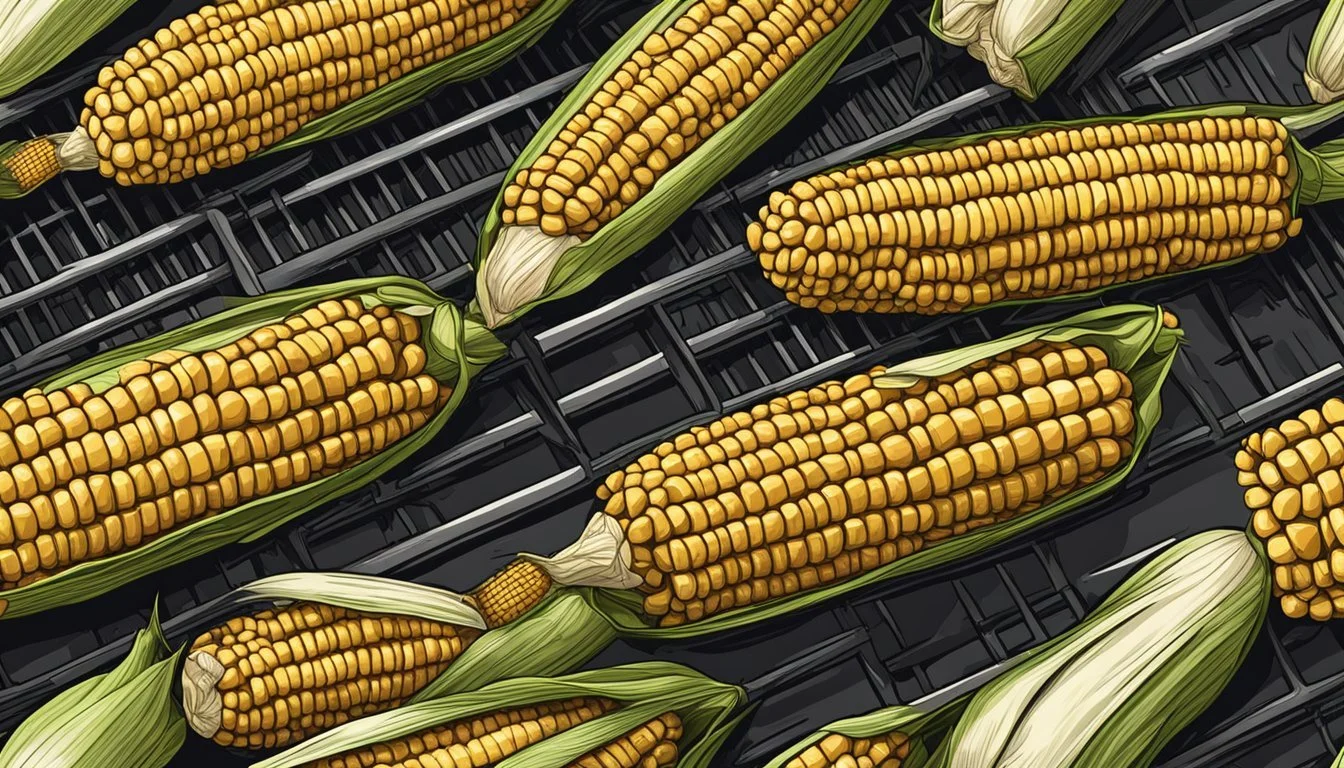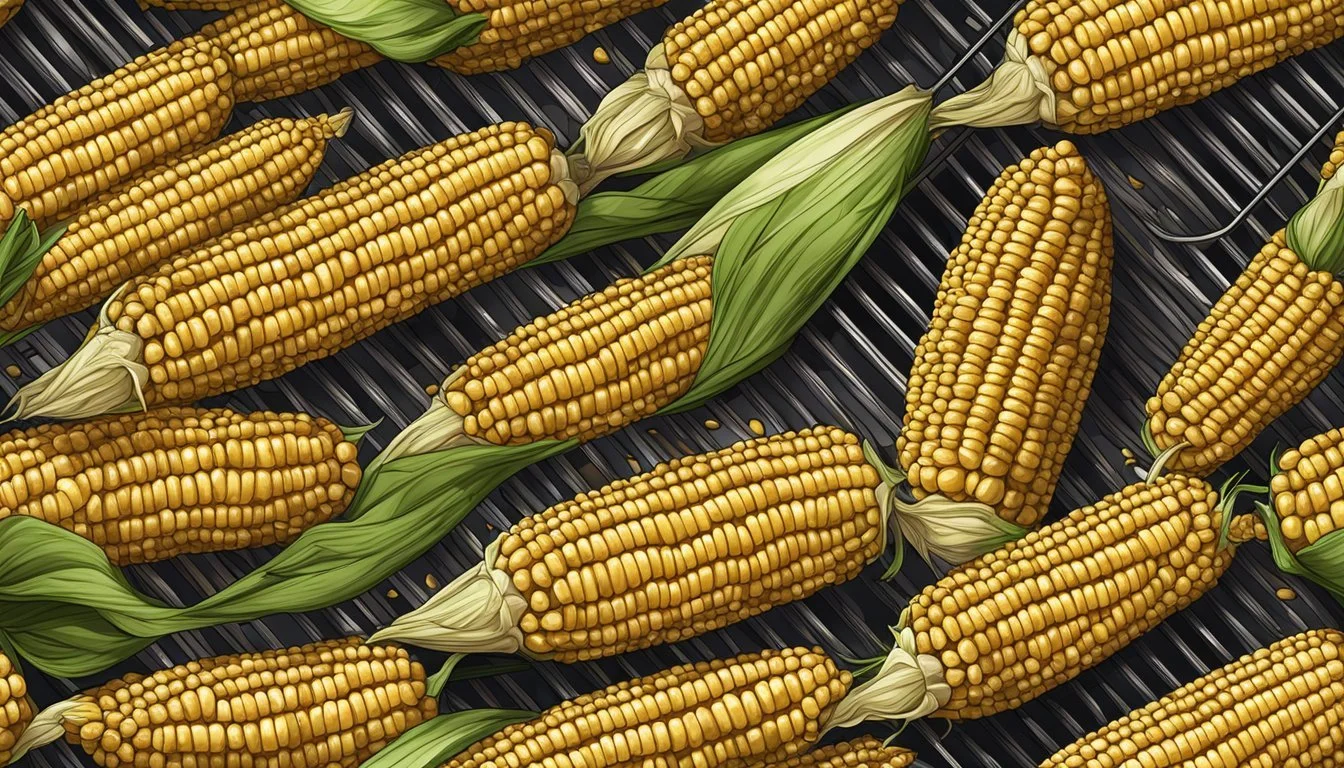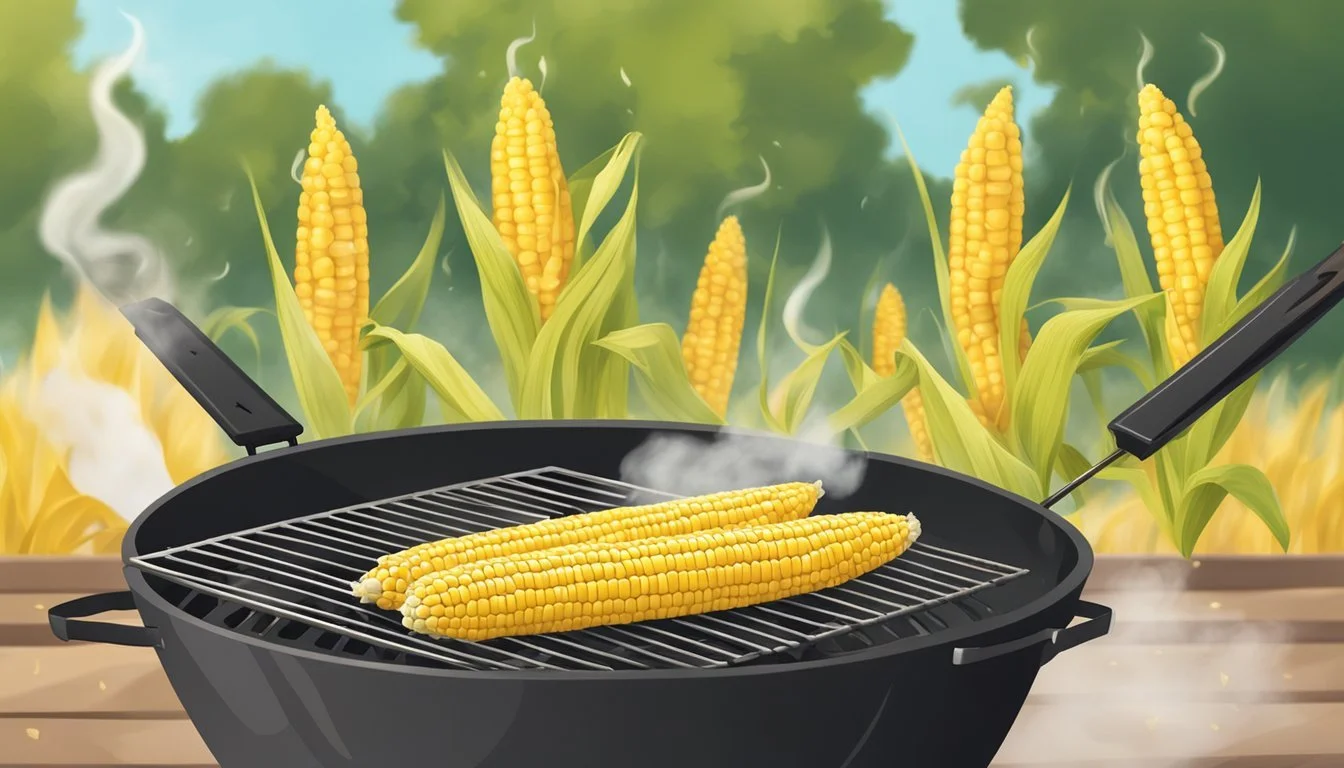How to Cook Corn on the Grill
Perfect, Smoky-Sweet Results
Grilling corn on the cob is a quintessential summer experience that elevates this simple vegetable to new heights of flavor. The outdoor grill imparts a smoky char and enhances the natural sweetness of the kernels, creating a delicious side dish for any barbecue or cookout. There are three main methods for grilling corn: directly on the grates, wrapped in foil, or in the husk, each offering unique results.
Cooking corn on the grill is straightforward and requires minimal preparation. The key lies in selecting fresh, high-quality corn and mastering the timing to achieve the perfect balance of tenderness and bite. Whether you prefer a crisp, charred exterior or a more subtle, steamed result, grilling corn offers versatility to suit various tastes and cooking preferences.
As the aroma of grilled corn wafts through the air, it signals the essence of summer gatherings and outdoor dining. This simple yet satisfying dish pairs well with a variety of main courses and can be customized with different toppings and seasonings to create a memorable eating experience.
Choosing the Right Corn
Selecting the perfect corn for grilling is crucial for a delicious result. The right choice impacts flavor, texture, and overall enjoyment of your grilled corn dish.
Types of Corn
Sweet corn is the most popular variety for grilling. It comes in yellow, white, and bi-color varieties. Yellow corn offers a traditional sweet flavor and vibrant appearance. White corn tends to be slightly sweeter and more tender. Bi-color corn combines the best of both worlds with a mix of yellow and white kernels.
For grilling, look for varieties with high sugar content. These retain sweetness better during cooking. Some popular sweet corn cultivars include 'Silver Queen', 'Peaches and Cream', and 'Golden Bantam'.
Freshness Check
Fresh corn is key to a great grilled dish. Look for ears with bright green, tightly wrapped husks. The silk should be light brown or golden, and slightly sticky. Avoid ears with dry or black silks.
Gently squeeze the ear to feel if kernels are plump and tightly packed. Peel back a small section of husk to check kernel appearance. Fresh kernels should be plump and release a milky liquid when punctured.
For best results, use corn within 1-2 days of purchase. Store it in the refrigerator with husks on to maintain freshness.
Where to Buy
Farmers markets are excellent sources for fresh, locally grown corn. Many farmers harvest corn the same day it's sold, ensuring peak freshness. Ask vendors about their growing practices and corn varieties.
Grocery stores also offer fresh corn, especially during peak season. Look for corn displayed in refrigerated sections. Some stores receive daily deliveries from local farms.
Consider joining a Community Supported Agriculture (CSA) program for regular deliveries of fresh, seasonal produce including corn. Roadside stands in rural areas often sell fresh-picked corn at competitive prices.
Preparation Essentials
Proper preparation is key to achieving perfectly grilled corn. The steps you take before placing the corn on the grill can significantly impact the final flavor and texture.
Shucking the Corn
Shucking corn involves removing the husks and silk. Start by peeling back the outer layers of husks. Grasp the silk at the top of the ear and pull downward, removing as much as possible. For stubborn silk strands, use a soft brush or damp paper towel to gently rub them off.
Some prefer to leave a thin layer of inner husk for added protection during grilling. This can help retain moisture and prevent burning.
For easier shucking, cut off the stalk end with a serrated knife to loosen the husks. This technique exposes the bottom of the ear, making husk removal more efficient.
To Soak or Not to Soak
Soaking corn before grilling is a debated practice. Proponents claim it adds moisture and prevents burning. To soak, submerge shucked or unhusked corn in cold water for 15-30 minutes.
Critics argue soaking isn't necessary and can dilute flavor. They prefer grilling corn dry for a more concentrated taste and better char.
If grilling with husks on, a brief soak can help prevent the husks from burning too quickly. For shucked corn, brushing with oil before grilling often suffices to prevent sticking and add flavor.
Ultimately, the decision to soak depends on personal preference and grilling method. Experiment with both techniques to find your preferred outcome.
Grilling Techniques
Grilling corn on the cob enhances its natural sweetness and adds a smoky flavor. Three popular methods include grilling with husks, without husks, and using aluminum foil. Each technique offers unique benefits and results.
Grilling with Husks
Grilling corn with the husks on provides natural protection and helps steam the kernels. Start by peeling back the husks without removing them completely. Remove the silk and brush the kernels with butter or oil. Fold the husks back over the corn.
Place the ears on a preheated grill over medium-high heat. Cook for 15-20 minutes, turning every 5 minutes. The husks will char, creating a smoky flavor. The corn is done when the kernels are tender and easily pierced with a fork.
This method keeps the corn moist and allows for gentle cooking. It's ideal for those who prefer their corn less charred and more tender.
Grilling without Husks
For corn with distinct grill marks and a more charred flavor, remove the husks and silk completely. Brush the corn with oil to prevent sticking and enhance browning. Place the ears directly on a preheated grill over medium-high heat.
Grill for 10-12 minutes, turning every 2-3 minutes to ensure even cooking. Watch for char marks to develop on all sides. The corn is ready when it's lightly charred and the kernels are bright yellow and tender.
This technique results in a more intense grilled flavor and appealing grill marks. It's perfect for those who enjoy a slightly smoky, caramelized taste.
Using Aluminum Foil
Wrapping corn in aluminum foil creates a steaming effect similar to grilling with husks. Remove the husks and silk, then brush the corn with butter or oil. Season as desired. Wrap each ear tightly in foil.
Place the wrapped corn on a preheated grill over medium-high heat. Grill for 15-20 minutes, turning occasionally. The foil will become hot, so use tongs when handling.
This method allows for easy seasoning and results in tender, evenly cooked corn. It's ideal for adding herbs or spices before grilling and prevents the corn from drying out.
Seasonings and Flavorings
Grilled corn on the cob offers a perfect canvas for a variety of delicious seasonings and flavorings. From classic salt and pepper to zesty herb blends and spicy rubs, there are endless ways to enhance the natural sweetness of corn.
Simple Salt and Pepper
Salt and pepper form the foundation of corn seasoning. Use kosher salt for its coarse texture and clean flavor. Freshly ground black pepper adds a subtle heat and complexity.
Brush the corn with melted butter or olive oil before sprinkling with salt and pepper. This helps the seasonings adhere and adds richness.
For extra flavor, try seasoned salts like garlic salt or smoky sea salt. A dash of paprika can add color and mild sweetness.
Herb Infusion
Fresh herbs elevate grilled corn with bright, aromatic flavors. Chop herbs finely and mix with softened butter or olive oil.
Popular herb combinations include:
Basil and parsley
Rosemary and thyme
Chives and dill
Brush the herb mixture onto hot corn immediately after grilling. The residual heat will release the oils in the herbs, intensifying their flavors.
For a Mexican-inspired twist, try mixing cilantro, lime juice, and cotija cheese.
Spicy Variations
Spice lovers can kick up the heat on grilled corn with various chile powders and hot spices. Start with a light dusting and adjust to taste.
Spicy seasoning options:
Chili powder
Cayenne pepper
Smoked paprika
Chipotle powder
Red pepper flakes
For a balanced flavor, combine spices with butter or olive oil. Add a squeeze of lime juice to brighten the taste.
Try making elote-style corn by brushing with mayonnaise and sprinkling with chile powder, cotija cheese, and lime juice.
Advanced Topics in Corn Grilling
Elevate your grilled corn game with creative flavor combinations and techniques. These methods transform a simple side dish into a memorable culinary experience.
Compound Butters
Compound butters add depth and complexity to grilled corn. Mix softened butter with herbs, spices, or other ingredients. Try garlic and herbs, chili lime, or honey cinnamon butter. Spread on hot corn immediately after grilling.
For a savory option, combine butter with minced garlic, chopped parsley, and grated Parmesan cheese. Sweet variations include maple bacon or brown sugar pecan butter.
Apply compound butter while corn is still hot to melt and coat evenly. Make extra to store in the refrigerator for future use.
Mexican Street Corn
Mexican street corn, or elote, is a popular grilled corn variation. Grill corn until charred. Brush with mayonnaise and sprinkle with cotija cheese, chili powder, and lime juice.
For easier eating, cut kernels off the cob to make elote en vaso (corn in a cup). Mix in the same toppings plus cilantro.
Variations include using Greek yogurt instead of mayo for a tangier flavor. Add diced jalapeños for extra heat or swap cotija for feta cheese.
Sweet and Smoky Flavors
Enhance corn's natural sweetness with complementary flavors. Brush ears with a mixture of honey and butter before grilling to caramelize the sugars.
For a smoky-sweet combination, sprinkle corn with a blend of brown sugar and smoked paprika. Grill until the sugar melts and forms a glaze.
Create a grilled corn salad by cutting kernels off the cob and tossing with a honey-lime dressing, diced bell peppers, and cilantro. Add crumbled bacon for extra smokiness.
Accompaniments and Side Dishes
Grilled corn pairs beautifully with a variety of dishes, enhancing summer meals. From fresh vegetable combinations to savory meats and zesty dressings, the right accompaniments elevate this classic barbecue staple.
Vegetable Pairs
Tomato and cucumber salad complements grilled corn perfectly, offering a refreshing contrast. Slice tomatoes and cucumbers, toss with olive oil, vinegar, and herbs for a light side. Grilled vegetables like zucchini, bell peppers, and eggplant create a colorful medley alongside corn.
A corn salad doubles down on flavor - mix grilled kernels with fresh herbs, diced peppers, and a tangy vinaigrette. For a heartier option, combine black beans with corn, cilantro, and lime juice for a protein-packed salad.
Pasta salad works well for larger gatherings. Toss cooled pasta with grilled corn kernels, cherry tomatoes, and a creamy dressing.
Meat Combinations
Burgers and grilled corn form a classic duo. The smoky char of beef patties pairs nicely with sweet corn. Ribs offer another excellent match - their sticky, barbecue-sauce-coated exterior contrasts with corn's crisp bite.
For a lighter option, grilled salmon provides a delicate flavor that doesn't overpower the corn. Its flaky texture and rich omega-3 content balance the meal.
Crispy chicken wings make an indulgent pairing. Their crunchy exterior and juicy meat complement corn's natural sweetness.
Dressings and Sauces
Garlic parmesan butter elevates grilled corn. Mix softened butter with grated parmesan, minced garlic, and herbs. Spread on hot corn for a decadent treat.
Chipotle mayo adds a spicy kick. Blend mayonnaise with chipotle peppers in adobo sauce for a smoky, creamy topping.
Fresh salsa brightens corn's flavor. Combine diced tomatoes, onions, jalapeños, cilantro, and lime juice. Spoon over corn or serve alongside for dipping.
For a unique twist, drizzle corn with a light vinaigrette. Mix olive oil, lemon juice, and Dijon mustard for a tangy finish.
Corn Grilling Safety
Grilling corn safely requires attention to fire prevention, equipment maintenance, and proper food handling. These practices help ensure a delicious and worry-free cookout experience.
Avoiding Flare-ups
Flare-ups can catch corn husks on fire, ruining the corn and potentially causing a safety hazard. To prevent this, remove excess silk from the corn before grilling. If grilling corn without the husk, brush it lightly with oil to prevent sticking, but avoid excess oil that could drip and cause flames.
Keep a spray bottle of water nearby to quickly extinguish any small flare-ups. Position corn away from the hottest parts of the grill. For gas grills, turn off burners directly under the corn if flare-ups occur.
Monitor the corn closely while grilling. If flames persist, move the corn to a cooler part of the grill or temporarily remove it until the fire subsides.
Grill Maintenance
Clean grill grates before each use to prevent stuck-on food from burning and causing smoke or flames. Use a wire brush to scrub the grates when they're hot, making debris easier to remove.
Regularly check gas lines and connections for leaks on propane grills. Apply a soapy water solution to connections; bubbles indicate a leak requiring immediate attention.
Empty the grease trap or drip pan regularly to prevent grease fires. For charcoal grills, dispose of old ashes properly before each use.
Inspect the grill for rust or damage that could compromise its safety. Replace any worn or damaged parts promptly.
Proper Handling
Use long-handled tongs or a corn holder to turn and remove corn from the grill. This keeps hands away from heat and prevents burns.
Avoid cross-contamination by using separate plates and utensils for raw and cooked corn. Never reuse marinades or brushes that have touched raw food without thoroughly cleaning them first.
Let grilled corn cool slightly before handling or eating to prevent burns. Place hot corn on a clean platter, not back on plates that held raw corn.
Refrigerate any leftover grilled corn within two hours of cooking, or within one hour if the outdoor temperature is above 90°F (32°C). Properly stored, grilled corn can be safely consumed for 3-5 days.
Conclusion
Grilling corn on the cob elevates this summer staple to new heights. The heat caramelizes the natural sugars, creating a delightful sweetness and smoky flavor.
Whether grilled in the husk, wrapped in foil, or placed directly on the grates, each method produces delicious results. Grilling in the husk retains moisture and allows for gentle steaming.
Direct grilling creates appealing charred kernels and a more pronounced smoky taste. Foil-wrapped corn offers a balance between steamed and grilled textures.
Experiment with different seasonings to complement the grilled corn flavor. Butter, herbs, spices, and cheese can enhance the natural sweetness and smoky notes.
For the best grilled corn on the cob, select fresh ears and avoid overcooking. A perfectly grilled cob should have tender, juicy kernels with a slight crunch.
Grilled corn pairs wonderfully with a variety of summer dishes. It's a versatile side that complements grilled meats, salads, and other vegetables.
With these techniques, anyone can master the art of grilling corn. The reward is a delicious, quintessential summer treat that captures the essence of outdoor cooking.




